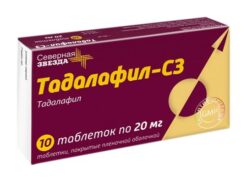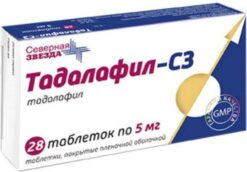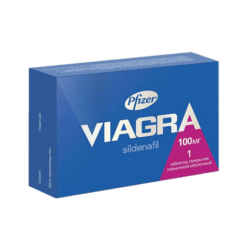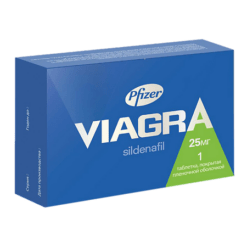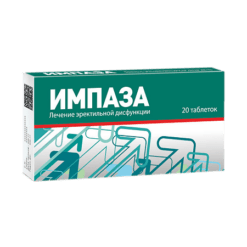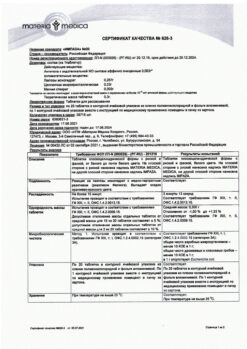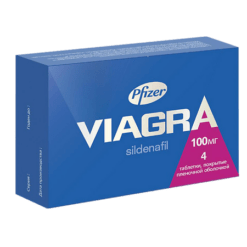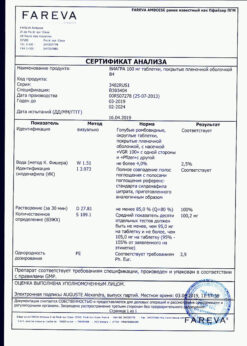No products in the cart.
Sonirid Duo Set, 0.4 mg+5 mg capsules 30 pcs
€35.97 €31.18
Description
Sonirid Duo is intended to treat and control symptoms of benign prostatic hyperplasia (BPH) when combined treatment with tamsulosin and finasteride is necessary in order to:
– to achieve regression of prostate size, improve urination and reduce lower urinary tract symptoms caused by BPH;
– to slow the clinical progression of the disease and reduce the incidence of acute urinary retention and the need for surgical treatment, including transurethral resection of the prostate (TURP) and prostatectomy.
Sonirid Duo can only be used in cases of enlarged prostate (prostate volume greater than 40 cm3). At such enlargement of prostate the combined treatment relieves symptoms of BPH and slows down clinical progression of disease more effectively than monotherapy with finasteride or alpha 1-adrenoreceptor blocker.
The drug may be used only for treatment of men.
Pharmacodynamics
Pharmacodynamics of tamsulosin
Tamsulosin selectively and competitively blocks postsynaptic alpha-1-adrenoreceptors located in the smooth muscle of the prostate, bladder neck and prostatic urethra (alpha-1 A subtype) as well as alpha-1-adrenoreceptors mainly located in the bladder body (alpha-ID subtype).
This leads to a decrease in the tone of the smooth muscles of the prostate, bladder neck and prostatic part of the urethra and improvement of detrusor function. This decreases symptoms of obstruction and irritation associated with benign prostatic hyperplasia.
Therapeutic effect usually develops 2 weeks after initiation of the drug, although some patients show reduction of symptoms after the first dose. The ability of tamsulosin to affect alpha-1A-adrenoreceptors is 20 times greater than its ability to interact with alpha-1B-adrenoreceptors which are located in vascular smooth muscle.
This high selectivity ensures that the drug does not cause any clinically significant reduction in systemic arterial blood pressure (BP) in both patients with arterial hypertension and patients with normal baseline BP.
Pharmacodynamics of finasteride
Finasteride is a synthetic 4-azasteroid, a specific inhibitor of the intracellular 5-alpha reductase type II enzyme. The latter converts testosterone to the more active androgen, 5-alpha-dihydrotestosterone (DHT).
The normal function and growth of the prostate gland, including its hypertrophic tissue, is dependent on the conversion of testosterone to DHT. Finasteride does not act on androgen receptors. In healthy volunteers prostate cell proliferation and apoptosis are balanced by the interaction of growth-inhibiting and growth-promoting factors.
While the etiological factors that cause prostatic hyperplasia at the molecular level are not yet known, it is likely that DHT plays a role in this process. Specific inhibitors of 5-alpha reductase type II reduce the concentration of DHT in the prostate and promote regression of prostatic hyperplasia.
According to clinical studies, treatment with finasteride rapidly reduces plasma concentrations of DHT by 70%, resulting in a reduction in prostate volume. At continuous use statistically significant effects are registered after 3 months (reduction in the volume of the gland by approximately 20%) and 7 months, (reduction in the severity of symptoms associated with prostatic hyperplasia).
In the human body there are 2 types of 5-alpha reductase: I and P. Their distribution in tissues varies: type II isoenzyme is found in the prostate, testicles and their appendages, penile head, scrotum, seminal vesicles, liver and chest; type I is found mainly in the scalp, back and chest, sebaceous glands, liver, adrenal glands and kidneys.
Finasteride primarily inhibits the type II isoenzyme responsible for most of the DHT in the blood. A single dose of finasteride rapidly and significantly changes plasma concentrations of DHT. A single dose of 5 mg of finasteride reduces plasma DHT concentrations by 75%, which reaches its lowest level at 24 hours, then returns to baseline within 7 days.
Finasteride remains effective when taken multiple times. Finasteride reduces the concentration of DHT in the prostate itself by Finasteride has no affinity for androgen receptors and has no other hormonal action.
After the discovery of 5-alpha reductase and the description of 5-alpha reductase deficiency syndrome type II (male hermaphroditism), the role of androgens in benign prostatic hyperplasia has been revisited.
The development of the prostate depends on DHT, a strong androgen. When 5-alpha reductase deficiency occurs against a background of normal or high testosterone levels in adulthood, prostatic atrophy is observed.
DHT activates androgen receptors to form dimers that bind to DNA and directly or indirectly promote cell proliferation by altering expression of genes responsible for proliferation and apoptosis.
In intact prostate, the processes of apoptosis and proliferation are in equilibrium. Although the factors provoking prostatic hyperplasia at the molecular level are unknown, the role of DHT in this is highly probable. Specific type II 5-alpha reductase inhibitors can reduce the concentration of DHT in the prostate and promote the reversal of prostatic hyperplasia.
There was significant lethality in mice and rats of both sexes when a single dose of finasteride equal to 1500 mg/m2 (500 mg/kg) mg/m2 (400 mg/kg for females) and 5900 mg/m2 (1000 mg/kg for males) was fed. Low doses of the drug fed to pregnant rats caused genital malformations in male offspring.
Pharmacokinetics
Tamsulosin
Intake: Tamsulosin is absorbed in the small intestine with a fasting bioavailability of almost 100%. When tamsulosin is taken with food its absorption decreases. In order to achieve the same level of absorption, the drug should be taken daily in the dose indicated in the instructions after breakfast.
If a single long-acting capsule of 0.4 mg is taken after a meal, the maximum plasma concentration (Cmax) of the drug is reached approximately 6 hours later.
In multiple dosing, the equilibrium concentration is reached by day 5, when the maximum plasma concentration of the drug is approximately 2-3 times higher than in single dosing. Although these values were evaluated in elderly patients, they are assumed to be similar in younger patients. Individual fluctuations in plasma concentrations may occur with single and multiple dosing.
Distribution: Approximately 99% of tamsulosin is bound to plasma proteins; the volume of distribution is small (about 0.2 L/kg).
Metabolism: Tamsulosin is metabolized slowly; the “first pass” effect is insignificant. Tamsulosin is slowly biotransformed in the liver to form pharmacologically active metabolites that remain highly selective to alpha-1 A-adrenoreceptors.
Most of the active substance is present in the blood unchanged. Minor microsomal induction induced by tamsulosin has been detected in rats. None of the metabolites is more active than tamsulosin.
Elimation: Tamsulosin and its metabolites are primarily excreted by the kidneys, approximately 9% of the drug dose taken is unchanged. Plasma elimination half-life of the drug was 10 hours after a single use of 0.4 mg capsule, after repeated use – 13 hours, final elimination half-life – 22 hours. No dose adjustment is required in case of renal diseases. Finasteride
Intake: Rapidly absorbed from the gastrointestinal tract, within 2 hours it reaches a maximum plasma concentration of 37 ng/ml. Absorption in the gastrointestinal tract is completed 6-8 hours after intake. Food intake has no effect on absorption of finasteride. Bioavailability of finasteride when taken orally is approximately 80%.
Distribution: 90% of circulating finasteride is bound to plasma proteins and has no damaging effect in renal disease. Finasteride penetrates the blood-brain barrier and is distributed in small amounts in the seminal fluid of patients. The volume of distribution is 76±14 l.
Metabolism: Finasteride is actively metabolized in the liver by oxidative biotransformation. Two of the 5 metabolites of finasteride have weak activity and are responsible for 20% of the total inhibition of 5-alpha reductase.
Evacuation: The average half-life of finasteride is 6 hours (4-12 hours), in men over 70 years of age it is 8 hours (6-15 hours). When labeled finasteride was used, approximately 39% (32-49%) of the administered dose was excreted by the kidneys as metabolites.
Unlabeled finasteride was virtually undetectable in the urine. Approximately 57% (51-64%) of the total dose was excreted through the intestine. In patients with impaired renal function (creatinine clearance > 9 ml/min) no differences in finasteride excretion were observed. Concentrations of finasteride in semen range from undetectable ( Long-term, 3-7 months of administration at a dose of 5 mg/day, reduces serum DHT concentrations by 70%.
Pharmacokinetics in selected patient groups:
In elderly patients, finasteride is excreted slightly slower, but this has no clinical significance and does not require dose adjustment. This also applies to patients with renal insufficiency, as the decrease in renal excretion of metabolites is compensated for by increased excretion of the drug through the intestine.
The pharmacokinetics of finasteride in patients with hepatic impairment have not been studied. Since finasteride is actively metabolized in the liver, additional monitoring is required in patients with liver disease.
Indications
Indications
Treatment and control of symptoms of benign prostatic hyperplasia (BPH).
Pharmacological effect
Pharmacological effect
The drug Sonirid Duo is intended for the treatment and control of symptoms of benign prostatic hyperplasia (BPH) when combined treatment with tamsulosin and finasteride is necessary for the purpose of:
– achieving regression in the size of the prostate gland, improving urination and reducing symptoms of the lower urinary tract caused by BPH;
– slowing the clinical progression of the disease and reducing the incidence of acute urinary retention and the need for surgical treatment, including transurethral resection of the prostate (TURP) and prostatectomy.
Soniride Duo can only be used if the prostate gland is enlarged (prostate volume is more than 40 cm3). For this enlarged prostate, combination treatment relieves symptoms of BPH and slows the clinical progression of the disease more effectively than finasteride or an alpha-1 blocker alone.
The drug can only be used to treat men.
Pharmacodynamics
Pharmacodynamics of tamsulosin
Tamsulosin selectively and competitively blocks postsynaptic alpha-1 adrenergic receptors located in the smooth muscle of the prostate gland, bladder neck and prostatic urethra (alpha-1 A subtype), as well as alpha 1-adrenergic receptors predominantly located in the body of the bladder (alpha-ID subtype).
This leads to a decrease in the tone of the smooth muscles of the prostate gland, bladder neck and prostatic urethra and improved detrusor function. This reduces the symptoms of obstruction and irritation associated with benign prostatic hyperplasia.
As a rule, the therapeutic effect develops 2 weeks after starting the drug, although in some patients a decrease in the severity of symptoms is noted after taking the first dose. Tamsulosin’s ability to act on alpha-1A adrenergic receptors is 20 times greater than its ability to interact with alpha-1B adrenergic receptors, which are located in vascular smooth muscle.
Due to this high selectivity, the drug does not cause any clinically significant decrease in systemic blood pressure (BP) both in patients with arterial hypertension and in patients with normal baseline blood pressure.
Pharmacodynamics of finasteride
Finasteride is a synthetic 4-azasteroid, a specific inhibitor of the intracellular enzyme 5-alpha reductase type II. The latter converts testosterone into a more active androgen – 5-alpha-dihydrotestosterone (DHT).
Normal function and growth of the prostate gland, including its hypertrophied tissue, depends on the conversion of testosterone to DHT. Finasteride does not act on androgen receptors. In healthy volunteers, proliferation and apoptosis of prostate cells are balanced due to the interaction of factors that inhibit and stimulate growth.
Although the etiological factors causing prostatic hyperplasia at the molecular level are not yet known, it is likely that DHT plays a role in this process. Specific inhibitors of type II 5-alpha reductase reduce the concentration of DHT in the prostate and promote regression of prostatic hyperplasia.
According to clinical studies, treatment with finasteride rapidly reduces plasma DHT concentrations by 70%, which leads to a decrease in prostate volume. With continuous use, statistically significant effects are recorded after 3 months (reduction in gland volume by approximately 20%) and 7 months (reduction in the severity of symptoms associated with prostatic hyperplasia).
There are 2 types of 5-alpha reductase in the human body: I and P. Their distribution in tissues is uneven: type II isoenzyme is found in the prostate, testicles and their appendages, glans penis, scrotum, seminal vesicles, liver and chest; Type I occurs mainly in the scalp, back and chest, sebaceous glands, liver, adrenal glands and kidneys.
Finasteride primarily inhibits type II isoenzyme, which is responsible for most of the DHT in the blood. A single dose of finasteride rapidly and significantly changes plasma DHT concentrations. A single dose of 5 mg of finasteride reduces the concentration of DHT in plasma by 75%, which reaches its minimum at 24 hours, then returns to its original level within 7 days.
With repeated use, finasteride remains effective. Finasteride reduces the concentration of DHT in the prostate itself. Finasteride does not show affinity for androgen receptors and does not have any other hormonal effects.
Following the discovery of 5-alpha reductase and the description of 5-alpha reductase deficiency syndrome type II (male-type hermaphroditism), the role of androgens in benign prostatic hyperplasia was reexamined.
Prostate development is dependent on DHT, a strong androgen. With 5-alpha reductase deficiency in the presence of normal or high testosterone levels in adulthood, prostate atrophy is observed.
DHT activates androgen receptors, forming dimers after joining them, which, when interacting with DNA, directly or indirectly promote cell proliferation by changing the expression of genes responsible for proliferation and apoptosis.
In the intact prostate, the processes of apoptosis and proliferation are in balance. Although the factors that trigger prostate hyperplasia at the molecular level are unknown, the role of DHT is very likely. Specific inhibitors of type II 5-alpha reductase can reduce the concentration of DHT in the prostate and promote the reverse development of a hyperplastic prostate.
Significant mortality was observed in mice and rats of both sexes when fed a single dose of finasteride equal to 1500 mg/m2 (500 mg/kg) mg/m2 (400 mg/kg for females) and 5900 mg/m2 (1000 mg/kg for males). Small doses of the drug fed to pregnant rats caused genital malformations in male offspring.
Pharmacokinetics
Tamsulosin
Absorption: Tamsulosin is absorbed in the small intestine, bioavailability on an empty stomach is almost 100%. When taking tamsulosin with food, its absorption is reduced. To achieve the same level of absorption, the drug should be taken daily at the dose indicated in the instructions, after breakfast.
When taking one extended-release capsule of 0.4 mg after a meal, the maximum concentration (Cmax) of the drug in plasma is achieved after approximately 6 hours.
With repeated administration, equilibrium concentration is achieved by day 5, when the maximum concentration of the drug in plasma is approximately 2-3 times higher than with a single dose. Although these rates were assessed in older patients, they are expected to be similar in younger patients. With single and multiple doses, individual fluctuations in the concentration of the drug in plasma may occur.
Distribution: Approximately 99% of tamsulosin is bound to plasma proteins; the volume of distribution is small (about 0.2 l/kg).
Metabolism: Tamsulosin is metabolized slowly, the first-pass effect is negligible. Tamsulosin is slowly biotransformed in the liver to form pharmacologically active metabolites that retain high selectivity for alpha-1 A adrenergic receptors.
Most of the active substance is present in the blood unchanged. In rats, a slight microsomal induction caused by tamsulosin was detected. None of the metabolites is more active than tamsulosin.
Excretion: Tamsulosin and its metabolites are predominantly excreted by the kidneys, approximately 9% of the administered dose of the drug is unchanged. The half-life of the drug from plasma was 10 hours with a single dose of 0.4 mg capsule, after multiple doses it was 13 hours, the final half-life was 22 hours. For kidney diseases, no dose adjustment is required. Finasteride
Absorption: Rapidly absorbed from the gastrointestinal tract, after 2 hours it reaches a maximum plasma concentration of 37 ng/ml. Absorption in the gastrointestinal tract is completed 6-8 hours after administration. Eating does not affect the absorption of finasteride. The bioavailability of finasteride when taken orally is approximately 80%.
Distribution: 90% of circulating finasteride is bound to plasma proteins and does not have a damaging effect in kidney disease. Finasteride penetrates the blood-brain barrier and is distributed in small amounts in the seminal fluid of patients. The volume of distribution is 76±14 l.
Metabolism: Finasteride is actively metabolized in the liver through oxidative biotransformation. Two of the 5 metabolites of finasteride have weak activity and are responsible for 20% of the total inhibition of 5-alpha reductase.
Elimination: The average half-life of finasteride is 6 hours (4-12 hours), in men over 70 years of age – 8 hours (6-15 hours). When using labeled finasteride, approximately 39% (32-49%) of the administered dose was excreted by the kidneys in the form of metabolites.
Unchanged finasteride was practically not detected in urine. Approximately 57% (51-64%) of the total dose is excreted through the intestines. In patients with impaired renal function (creatinine clearance > 9 ml/min), no differences were found in the excretion of finasteride. The concentration of finasteride in sperm ranges from undetectable ( Long-term, 3-7-month use at a dose of 5 mg / day, reduces the concentration of DHT in the blood serum by 70%.
Pharmacokinetics in certain groups of patients:
In elderly patients, finasteride is eliminated slightly more slowly, but this is not clinically significant and does not require dose adjustment. This also applies to patients with renal failure, since the decrease in renal excretion of metabolites is compensated by an increase in drug excretion through the intestines.
The pharmacokinetics of finasteride in patients with liver failure have not been studied. Since finasteride is actively metabolized in the liver, additional monitoring is necessary in case of liver disease.
Active ingredient
Active ingredient
Tamsulosin, Finasteride set
Composition
Composition
Finasteride
Composition per 1 tablet:
active ingredient:
finasteride, 5 mg;
excipients:
Tablet core:
magnesium stearate 0.7500 mg; talc 4.5000 mg; sodium carboxymethyl starch (type A) 7.5000 mg; pregelatinized starch 15.0000 mg; microcrystalline cellulose 15.0000 mg; lactose monohydrate 102.2500 mg.
Shell:
titanium dioxide SL.77891 EEC 171 0.1881 mg; lactose monohydrate 0.3809 mg; macrogol-6000 0.6214 mg; hyprolose 1.9048 mg; hypromellose 1.9048 mg.
Tamsulosin
Composition per 1 capsule:
active ingredient:
tamsulosin hydrochloride, 0.4 mg;
excipients:
calcium stearate 0.800 mg; triethyl citrate 1,100 mg; talc 2,500 mg; methacrylic acid and ethyl acrylate copolymer (1:1) 43.800 mg, also containing polysorbate-80 1.000 mg, sodium lauryl sulfate 0.300 mg; microcrystalline cellulose 281,400 mg.
Composition of hard gelatin capsule Cap:
iron oxide dye yellow SL. 77492 E172 0.2000%, titanium dioxide SL. 77891 E171 0.3333%, iron dye black oxide SL. 77499 E172 0.5300% iron dye red oxide SL. 77491 E172 0.9300%, gelatin up to 100.000%.
Housing:
red iron oxide dye S L. 77491 E172 0.010%, black iron oxide dye SL. 77499 E172 0.0100%, iron dye yellow oxide SL. 77492 E172 0.1714%, titanium dioxide SL 77891 E171 3.000%, gelatin up to 100.000%.
Contraindications
Contraindications
History of postural hypotension;
severe liver failure;
impaired renal function (plasma creatinine concentration >2 mg/dL);
galactose intolerance, lactase deficiency or glucose-galactose malabsorption;
women and children;
hypersensitivity to active or auxiliary substances.
With caution: if there is a risk of developing obstructive uropathy; for liver diseases; when planning surgical treatment of cataracts.
Side Effects
Side Effects
Adverse reactions of tamsulosin monotherapy
From the nervous system: frequent – dizziness; uncommon – headache; rare – fainting.
From the cardiovascular system: uncommon – postural hypotension, tachycardia.
From the respiratory system: infrequent – rhinitis.
From the digestive system: infrequent – constipation, diarrhea, nausea, vomiting.
From the skin and subcutaneous fat: uncommon – rash, itching, urticaria; rare – angioedema.
From the reproductive system: infrequent – retrograde ejaculation; rare – priapism.
Adverse reactions of finasteride monotherapy
From the immune system: infrequent – hypersensitivity.
On the part of the organ of vision: infrequent – clouding of the lens.
From the digestive system: frequent – abdominal pain.
From the skin and subcutaneous fat: infrequently – rash.
From the reproductive system and mammary glands: frequent – erectile dysfunction, ejaculation disorders, decreased ejaculate volume, decreased libido; uncommon – breast tenderness, breast enlargement, testicular pain.
During post-marketing surveillance, the following additional adverse reactions were described (no data on the frequency of adverse reactions): hypersensitivity reactions, including itching, urticaria, swelling of the lips and face.
Adverse reactions of combination treatment
In patients receiving combination treatment (finasteride and an α1-blocker), the same adverse reactions are described, occurring with the same frequency as with monotherapy with finasteride and an α1-blocker. However, the following exceptions were identified: erectile dysfunction and ejaculatory dysfunction were more common with combination treatment, while disease progression (including worsening BPH symptoms or the need for surgery) was more common with monotherapy.
Interaction
Interaction
In vitro studies of hepatic microsomal fractions (a model of drug metabolism by the cytochrome P450 enzymatic system) determined that tamsulosin does not interact pharmacokinetically with finasteride during metabolism in the liver.
Additional interactions of tamsulosin with other drugs and other types of interactions
No interaction was found with the simultaneous use of tamsulosin and atenolol, enalapril, nifedipine or theophylline.
Concomitant use with cimetidine may cause an increase in the plasma concentration of tamsulosin, while furosemide causes a decrease. However, there is no need to change the dose of the drug, because tamsulosin concentration remains within normal limits.
In vitro, diazepam, propranolol, trichlormethiazide, chlormadinone, amitriptyline, diclofenac, glibenclamide, simvastatin and warfarin do not change the content of the free fraction of tamsulosin in human plasma.
Tamsulosin also does not change the content of the free fraction of diazepam, propranolol, trichlormethiazide and chlormadinone.
In in vitro studies of hepatic microsomal fractions (a model of drug metabolism by the cytochrome P450 enzymatic system), no interaction with amitriptyline, salbutamol, glibenclamide and finasteride was observed at the level of hepatic metabolism.
However, diclofenac and warfarin may increase the elimination rate of tamsulosin.
Theoretically, there is a possibility that co-administration with tamsulosin may enhance the hypotensive effect of other drugs, such as general anesthetics or other α1-blockers.
Additional interactions of finasteride with other drugs and other types of interactions
No clinically significant interactions have been identified when finasteride is used together with the following drugs: warfarin, ACE inhibitors, α1-blockers, theophylline, acetylsalicylic acid, paracetamol, beta-blockers, diuretics, nitrates, slow calcium channel blockers, anticonvulsants, NSAIDs, benzodiazepines, quinolones, histamine blockers H2 receptors, 3-hydroxy-3-methyl-glutaryl-coenzyme A reductase (HMG-CoA) inhibitors.
Storage conditions
Storage conditions
At 15–30 °C
Shelf life
Shelf life
3 years
Manufacturer
Manufacturer
Gedeon Richter, Hungary
Additional information
| Shelf life | 3 years |
|---|---|
| Conditions of storage | At 15-30 °C |
| Manufacturer | Gedeon Richter, Hungary |
| Medication form | capsules |
| Brand | Gedeon Richter |
Related products
Buy Sonirid Duo Set, 0.4 mg+5 mg capsules 30 pcs with delivery to USA, UK, Europe and over 120 other countries.


